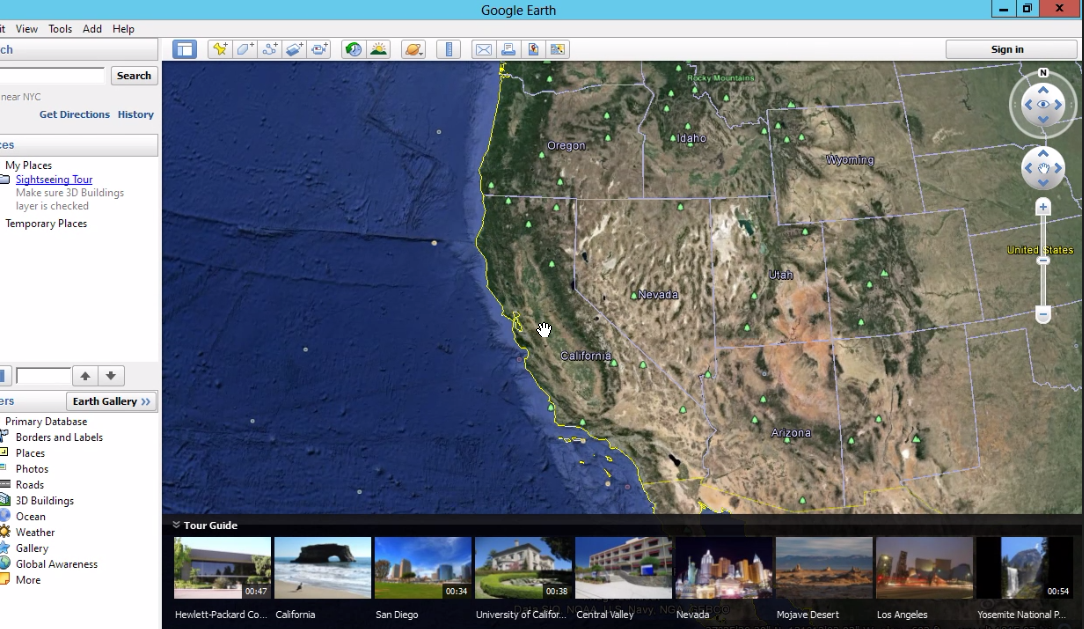
Cisco Systems this week announced its $1 billion Intercloud that will link nine partner companies to offer an OpenStack-based, app-centric cloud system supposedly aimed at the Internet of Things. That’s a lot of buzzwords for one press release and what it means is Cisco doesn’t mean to be left behind or to be left out of the IT services business. But Cisco’s isn’t the big cloud announcement this week: the really big announcement comes today from little Mainframe2.
This morning at the big nVIDIA GPU Technical Conference in Silicon Valley Mainframe2 demonstrated two new PC applications -- Google Earth and Microsoft Word -- running on its graphical cloud. This is significant not only because it implies (there’s been no announcement) that Mainframe2 has two new customers, but both companies are cloud vendors in their own right, so we can guess that Mainframe2 will be supported at some point by both Google’s cloud platform and Microsoft Azure.
Mainframe2, as you’ll recall from the two columns I’ve written previously about it (here and here), is a startup that enables cloud hosting of graphically-intensive PC applications. If you are a software developer and want to put your app on the cloud, Mainframe2 claims you can do so in 10 minutes or less and for almost no money. The app runs on a cloud of nVIDIA virtual GPUs with the screens painted as HTML5 video streams. This means you can effectively run Windows apps on your iPad, for example.
The first apps demonstrated on the Mainframe2 platform were from Adobe Systems and Autodesk. Now it has added Google and Microsoft. Oh, and Firefox is now a supported browser in addition to Chrome, Opera, and Safari.
I don’t know any more about this than you do at this point but let’s take some guesses about where this is headed.
All of these software companies that have allowed their applications to be demonstrated on Mainframe2 are potential -- even likely -- customers for the company. Google and Microsoft, as cloud vendors, are likely to license Mainframe2 (and its underlying nVIDIA Grid) in some form for their clouds. Mainframe2 launched originally on Amazon Web Services but I have to believe that support will shortly appear from a whole list of the usual suspect cloud service providers. That means Google and Microsoft will likely be offering their own graphical clouds.
While previous Mainframe2 demos were run from a single data center on the US west coast, the new demos are supported from data centers on the US east coast, Europe, and Japan as well.
Given that this week’s demo of Microsoft Word on Mainframe2 can’t officially run on Internet Explorer, you can bet Redmond will be fixing that problem shortly.
I’m not here to announce Game Over, but it seems to me the addition of these companies that normally don’t have anything to do with each other to the Mainframe2 list gives this little company an insurmountable lead in cross-platform cloud support for traditional desktop applications. Now all we need are Linux and Mac apps on Mainframe2. I’m sure the former will be coming and I’m not so sure about the latter but we’ll see.
This is a kick in the head to competing efforts that are based on protocols like VNC and RDP, which simply can’t repaint the screen as fast as Mainframe2. Think about it, RDP is a Microsoft technology yet here Microsoft is appearing to support Mainframe2. That’s a big deal.
Going even further, Mainframe2’s ability to dynamically reassign virtual GPUs to a task implies a great leveling in the desktop arms race. Once a very broad selection of popular applications are available on Mainframe2 it won’t matter beyond a certain point how many cores or how much RAM you have on your desktop (or mobile!). Any computer will be able to run any app on any platform at any speed you are willing to pay for, so my three-times-per-year use of Photoshop is going to fly.
This is a huge change in the market that PC hardware vendors will hate but PC software vendors should love because it will give them a whole new -- and much broader -- distribution channel. Sure there will be customers who’ll still choose to run their apps locally, but for another class of casual users there is a new alternative. And for the software companies and cloud vendors there’s a whole new source of revenue.
What we’ll see in the next 1-2 years is broad adoption of this platform with eventually most ISVs offering Mainframe2 versions of their products. Some companies will commit to the platform exclusively, I’m sure. But this period is like porting all your music from vinyl to CDs: there’s a lot of money to be made but it’s mainly just doing the old stuff in a different way. What I wonder about is what happens after this stage, when we start to see native Mainframe2 apps? What will those be like? When will we see the first native Mainframe2 game, for example? What will that be like?
This is going to be exciting -- something we wouldn’t even have dreamed of a year ago.

